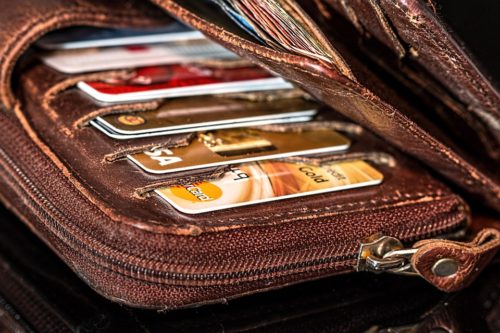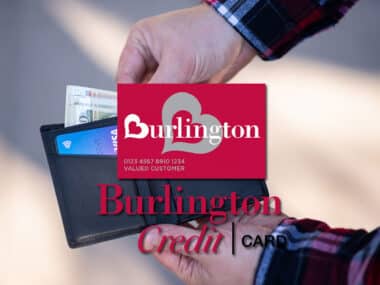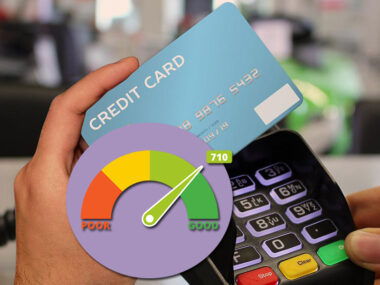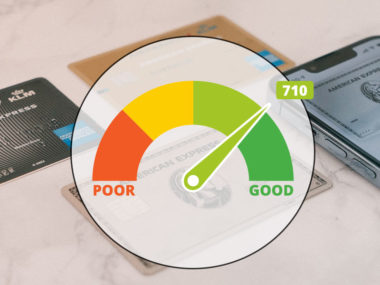Low credit is worse than no credit. With no credit, you have no history — lenders are unsure of your ability to repay them, but they hold no positive or negative opinions for or against you. Bad credit, on the other hand, paints a clear picture for the lenders, signalling that they should be wary of you as a borrower, and prompting them only to approve loans at much higher interest rates.
All is not lost, however, as it’s possible not only to repair your credit, but you can do so using a credit card. It’s a long road that requires discipline and patience to navigate, but, given time and good financial practices, your credit will improve.
Table of Contents
Secured Credit Card
There are a few key differences between a secured credit card (SCC) and an unsecured, “normal” credit card — and even a debit card. Unlike a debit card, your use of a secured credit card is reported to the three credit unions, which, along with good financial practices, will increase your credit score.
Secured credit cards, unlike a traditional unsecured credit card, often have high much higher fees. As these are often the best choice of credit cards for poor credit, banks treat them as high-risk accounts. There are a few secured cards that offer rewards, but chances are you will have a no-frills credit card.
Consumer.gov has a simple explanation: “A secured credit card works like a debit card. You use your money, not a loan from a bank.” Your credit limit is based on a deposit into an account, held separately from a checking or savings account.
These limits force you to fix bad financial habits. While the old you would be fine with delayed payments, missed payments will only keep your credit score down. If you don’t trust yourself to use credit responsibly, you can get a secured credit card to help rebuild credit using cash you’ve deposited instead of cash you would borrow. Due to this failsafe alone, an SCC may be the best credit card to rebuild credit. While you may be rejected for a unsecured credit card, you are more likely to be accepted for a secured credit card, because they are designed for high-risk borrowers. Last but not least, it’s important to note that you will get your deposit back from an unsecured card when you close or upgrade the secured account.
Unsecured Credit Card
Unsecured credit cards are “traditional” credit cards. While you can apply for a credit card with bad credit, the offers you are likely to receive tend to come at a steep cost. Unlike a secured credit card, a traditional credit card will not require a deposit. Instead, lenders charge high fees and interest on money you borrow. Over time, this might add up to more than what you would have paid for a secured credit card deposit without interest.
>There are no standard credit score requirements to apply for a credit card; instead, these requirements will vary from lender to lender and even from one specific card to the next. As such, you will likely find that lenders will offer you different cards based on your credit score.
Store Credit Cards
Another option is a store credit card, which is also a type of unsecured credit card, but provided by a retailer instead of a bank or credit union. They can be easier to get with a low credit score than a typical unsecured credit card, but are likely to have a higher interest rate and lower credit limit.
Credit Building Tips
When it comes to building or repairing your credit, it’s essential to be knowledgeable, patient, and educated. Adhering to the following advice will help to restore your credit in no time.
Understanding Your Credit Score
To know how to start rebuilding credit, it’s important to first understand how your credit score is calculated. The biggest determining factor is history. Between payment history and how long you have had an open credit card, it’s better not to start closing down accounts when you start on the road to rebuilding your credit. However, another factor is how many accounts you have open — you don’t want too many or too few. Ten cards may be too many, while having only one or two won’t help you build credit. Maintaining a history with a few cards, even if it’s a bad history, will help in the long run.
If you are rebuilding credit after bankruptcy, know that there will be a mark on your credit for anywhere between two and 10 years. Don’t let this discourage you — you can still build credit.
Consistent, On-Time Payments
Late payments are one of the biggest factors in contributing to a low credit score. Regardless of whether you have a long credit history or not, paying at least the minimum each month, on time, will help you build a positive history.
As you start down this path, your entire way of thinking about credit should change. Don’t think of it as a delayed payment. Instead, only use your credit cards as you would a debit card — only buy what you have money for now.
Credit Utilization Ratio
Though it may sound funny, paying off the entire credit card is not beneficial to your credit in the long term. Keeping a revolving credit affects another credit factor, usage, which is dependent on your credit limit. If your card has a $10,000 limit, and you have $7,500 on the card, you are at 75 percent usage.
The optimal usage is 30 percent. If you can keep the card under 30 percent, still paying each month but not paying all of the debt, your credit score should see an increase. Usage is very important – about 30 percent of the credit score calculation.
Credit Card Debt Consolidation and Settlements
How do you go about actually paying your outstanding credit card debt? First, you can try to negotiate with your credit card holders. Be honest. Don’t use excuses; instead, tell them you are moving forward and want to fix your financial and credit woes.
They can work with you to accomplish this. It may be in the form of consolidating debt with the help of a third party (a common scenario involves a consolidation company paying off your debt to the original lender, after which you owe the third party a debt instead). Or, it could be via a reduced interest rate or monthly payments. They may even waive certain fees or extend your repayment period, giving you a chance to earn money and settle your debt.
A debt settlement plan allows you to pay less than the full amount you owe — but this will show on your account, and your credit score will reflect your inability to fully pay back the creditor in these instances.
Each creditor is different, and may present you different options. Depending on how they report credit, your score may reflect different changes from one lender to the next. Be sure to talk with your specific creditor about how your score will be affected. Finally, there may also be tax implications for the options you choose. If possible, speak with a financial advisor, certified credit counselor, or tax professional on these matters.
Credit Repair
Repairing your credit is not an easy task, and there’s no way to do it quickly. Anyone who says differently is likely running a scam. What it does require is diligence, a will to change habits, and the discipline to stick with it. Practicing healthy spending habits with your credit cards, not overspending, and, most importantly, paying at least the minimum every month will help you rebuild your credit.
Depending on how bad your financial difficulties were, it could take months to years before your credit score recovers. However, with good financial habits and a little patience, your score can and will improve.
Image source: http://maxpixel.freegreatpicture.com





